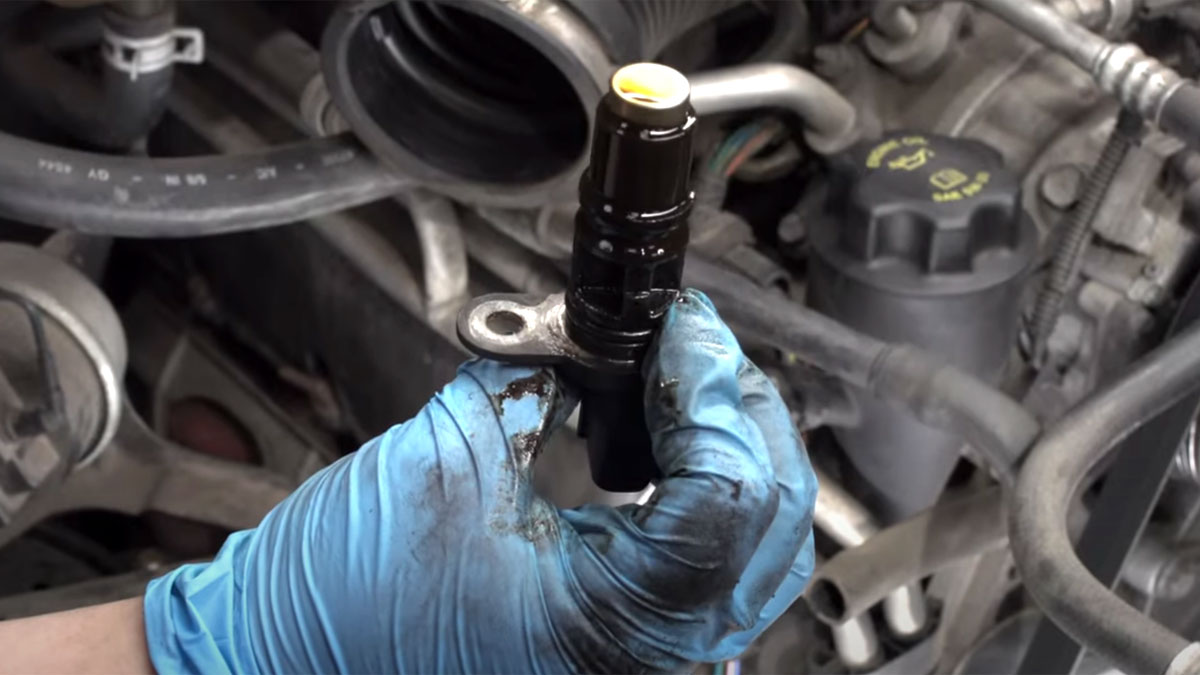Have you ever wondered what makes your car run so smoothly? Camshaft position sensors play an essential role in the operation of a vehicle’s engine. A camshaft position sensor, also known as a “CMP”, is used to monitor the rotational speed and angle of the camshaft.
This information is then reported back to the engine control unit which uses it to adjust ignition timing and fuel delivery accordingly. In this article, we’ll explore everything you need to know about camshaft position sensors from how they work to common problems that may arise with them.
So read on for all the details!
What Does a Camshaft Position Sensor Do?

A camshaft position sensor is an essential component of any modern engine. It monitors the rotational speed and angle of the camshaft, which helps ensure that your car runs smoothly and efficiently.
The sensor uses a magnetic field to detect how far along the camshaft has rotated, allowing for precise timing control over valves in the internal combustion engine. Without this information, fuel economy would suffer and engine performance could be compromised.
Furthermore, a faulty or absent camshaft position sensor can cause all manner of issues from stalling to increased emissions output and even damage to other components within the engine itself. By understanding what it does and why it’s so important, you can make sure your vehicle is running at its best for as long as possible.
How Does a Camshaft Position Sensor Work?

The camshaft position sensor is a critical component of any internal combustion engine. It detects the rotation and speed of the camshaft, which tells the engine control unit (ECU) how to adjust fuel injection and timing for peak performance.
The camshaft position sensor works by using magnets or optical sensors that detect changes in rotational speed, allowing the ECU to adjust accordingly. When functioning properly, this device ensures optimal engine efficiency and performance.
The camshaft has two lobes of varying size on its outer edge; these are called teeth. As it rotates, each tooth passes a magnet or optical sensor placed next to it. This generates an electronic signal that tells the ECU when one lobe has passed by an angle of 90 degrees relative to its starting point.
The frequency at which signals are sent gives information about how fast or slow the camshaft is turning – if it’s turning slowly then more time elapses between tooth-to-sensor interactions than if it’s spinning faster.
With this data,the ECU can determine what adjustments should be made for optimal performance based on current operating conditions such as RPM and load level so that all cylinders fire correctly in sequence with one another for maximum power output from the engine without wasting energy through misfires or inefficiently timed fuel injections .
Tips For Maintaining and Troubleshooting Your Camshaft Position Sensor
- Maintaining Your Camshaft Position Sensor: To maximize the performance of your camshaft position sensor, it is important to keep up with regular maintenance and cleaning. Start by inspecting the wires and cords regularly for any signs of damage or wear and tear. If necessary, replace the wiring or clean dirt and debris from around the connection points. Additionally, check that all screws are properly tightened as loose connections may lead to inaccurate readings or cause interference in other parts of your engine system.
- Troubleshooting Your Camshaft Position Sensor: If you notice a decrease in engine performance or a misfire when running at higher speeds, it could be an indication that something is wrong with your camshaft position sensor. To troubleshoot this issue start by checking for any visible signs of damage such as broken wires or faulty connectors which can affect performance levels. You should also look for any corrosion on metal components which can interfere with proper operation of the sensor itself before taking further steps towards replacing it entirely if necessary.
Conclusion

In conclusion, the Camshaft Position Sensor is an important part of any vehicle and it is essential to understand how it works in order to keep your car running efficiently. It can be a bit tricky to troubleshoot but with some basic knowledge and research it is possible.
By paying attention to the warning signs and replacing faulty parts as soon as they are identified, you can ensure that your Camshaft Position Sensor keeps functioning properly for many years ahead.

